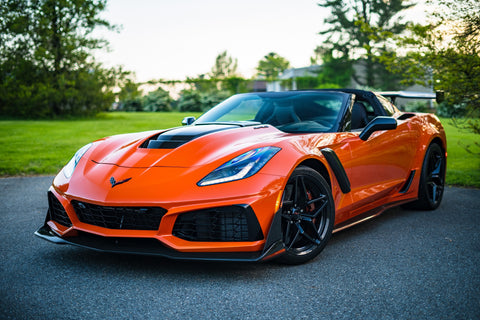From Cars to Walls: Where to Use Vinyl Wraps for Maximum Impact
The Ultimate Guide to Vinyl Wrap Installations: Where to Apply Them
Vinyl wraps are a versatile and cost-effective way to change the appearance of a vehicle or any surface. They are used for branding, advertising, and even personalization. Vinyl wraps can be installed on various surfaces, including cars, trucks, buses, boats, walls, and even floors. In this post, we will discuss where vinyl wraps can be installed.

Vehicles
Vinyl wraps are commonly used to change the appearance of vehicles. This includes cars, trucks, vans, and buses. They are often used for advertising and branding purposes. Vehicle wraps can be a full wrap that covers the entire vehicle or a partial wrap that covers only a portion of the vehicle.
Vinyl wraps can be installed on both the exterior and interior of a vehicle. This includes the body of the vehicle, the roof, the hood, the trunk, and even the interior panels. Vinyl wraps can be used to create a custom design or to replicate a factory finish.
Boats
Vinyl wraps can also be installed on boats. This includes powerboats, sailboats, and even yachts. Boat wraps are often used for branding and personalization. They can be used to change the appearance of the boat, add graphics or logos, or to protect the boat's finish.
Boat wraps are installed in a similar way to vehicle wraps. The vinyl is applied to the surface of the boat, and then heat is used to mold the vinyl to the contours of the boat's surface. Boat wraps are durable and can withstand exposure to water and the elements.
Walls
Vinyl wraps can be installed on walls. This includes interior and exterior walls. Wall wraps are often used for advertising, branding, and decoration. They can be used to create custom graphics or to replicate the look of a particular material, such as wood or brick.
Wall wraps are installed using a similar process to vehicle and boat wraps. The vinyl is applied to the surface of the wall, and then heat is used to mold the vinyl to the contours of the wall's surface. Wall wraps can be used in commercial and residential settings.
Floors
Vinyl wraps can also be installed on floors. This includes concrete, tile, and even carpet. Floor wraps are often used for branding, advertising, and decoration. They can be used to create custom graphics or to replicate the look of a particular material, such as wood or stone.
Floor wraps are installed using a similar process to wall wraps. The vinyl is applied to the surface of the floor, and then heat is used to mold the vinyl to the contours of the floor's surface. Floor wraps are durable and can withstand foot traffic and exposure to water.
Windows
Vinyl wraps can be installed on windows. This includes storefront windows, car windows, and even residential windows. Window wraps are often used for advertising, branding, and decoration. They can be used to create custom graphics or to replicate the look of frosted or etched glass.
Window wraps are installed using a similar process to wall and floor wraps. The vinyl is applied to the surface of the window, and then heat is used to mold the vinyl to the contours of the window's surface. Window wraps can be removed and replaced easily without damaging the window.
Conclusion
In conclusion, vinyl wraps can be installed on a variety of surfaces, including vehicles, boats, walls, floors, and windows. Vinyl wraps are a versatile and cost-effective way to change the appearance of a surface and can be used for branding, advertising, and personalization. If you're considering a vinyl wrap for your business or personal use, consider the various surfaces on which they can be installed.

